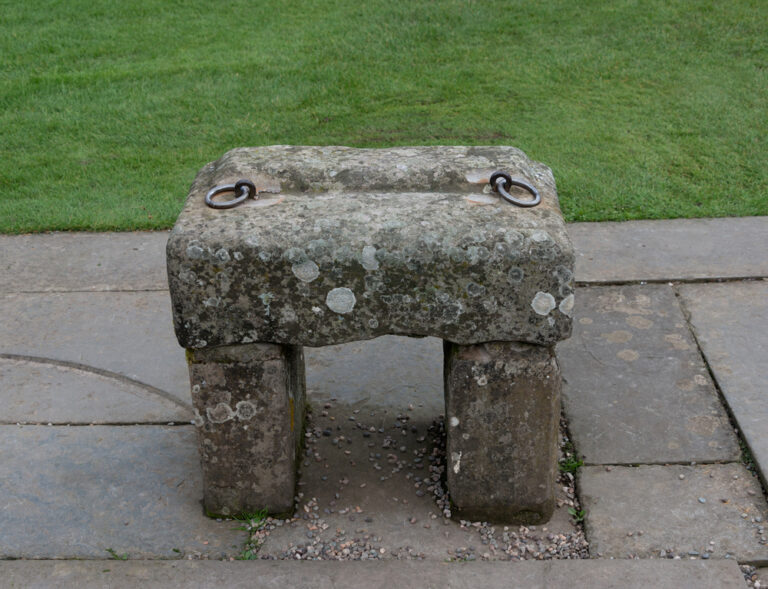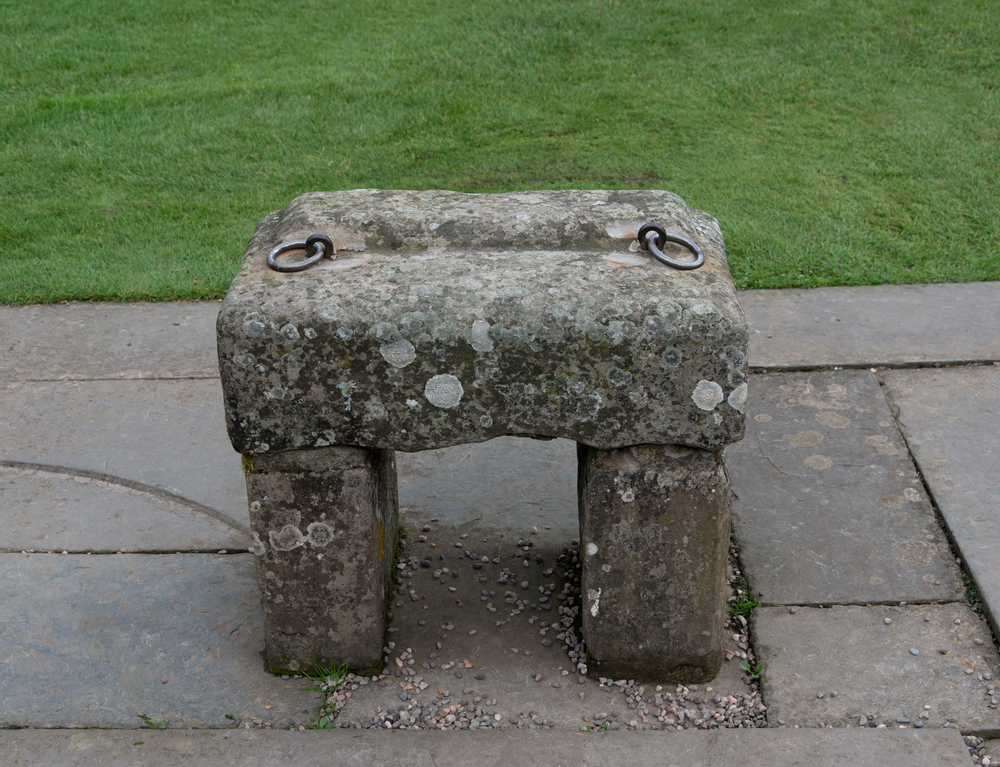
[ad_1]

As historic stone objects go, you wouldn’t think that a 335-pound block of dull sandstone would attract much attention. When it comes to heavyweight relics, the Rosetta Stone or one of Cleopatra’s Needles is far bigger and arguably better known around the world.
Nevertheless, Scotland’s Stone of Destiny has justly secured its own place in history, for this hefty chunk of rock is more than an artifact from ancient times: It is a sacred icon, a trophy of bloody war and conquest, and a political lightning rod. And for thousands of years, it has played a hallowed role in the making of kings and queens, the symbolic bedrock upon which monarchies have been built.
More recent research has shed new light on the stone’s legendary origins, which may take away some of its mystery. But science can’t diminish any of its lively history, nor its power as an object of reverence and tradition. Here’s what we know about the Stone of Destiny.
Where Did the Stone of Destiny Come From?
Jacob has a vision while resting on what some claim to be the Stone of Destiny (Credit: Nicku/Shutterstock)
The legend of the stone begins with the Bible. According to the Old Testament, the prophet Jacob fell asleep and had a divinely inspired dream of angels going up and down a set of steps that led to heaven — the famous vision of Jacob’s Ladder. Less well-known, but certainly mentioned in the Book of Genesis, is that Jacob had his vision while resting his head upon a stone. When he awoke, he set that stone up as a holy memorial to his sacred vision.
Jacob’s stony pillow, it’s been long asserted, was the Stone of Destiny.
The Stone of Scone
Not to malign the beliefs of the stone’s most ardent devotees, but at this point, it’s probably worth mentioning a couple of facts. First, the object we know today as the Stone of Destiny, which is also called the Stone of Scone, has been proven to be a type of 400-million-year-old red sandstone, which is not native to Palestine, where Jacob had his vision.
This particular type of red sandstone is common in Scotland, however, especially near the town of Scone in Perthshire. This was confirmed once again in a recent analysis done as part of a project to create a cutting-edge 3D scan of the stone, which has rendered it in unprecedented detail. Keep this in mind for later.
Read More: Who Were Scotland’s Mysterious ‘Bodies in the Bog’?
Meanwhile, back in ancient times, the legend of the Stone of Destiny purports that the stone came from the Holy Land and eventually arrived in Ireland sometime in the 7th century B.C. There, it was known as the Lia Fail — Gaelic for “stone of destiny.” (However, a completely different Lia Fail still stands in Ireland; its apocryphal history is often conflated with that of the Stone of Scone.) The stone was supposedly placed at the sacred hill of Tara, where it was used in ceremonies to crown the kings of Ireland for nearly 1,500 years.
The Stone of Destiny Heist
Coronation Chair with Stone of Destiny in place (Credit: Public domain/Wikimedia Commons)
In the 9th century, Celts were said to have taken the stone from Ireland to a land they called Alba — we know it as Scotland. It ended up at the medieval town of Scone, which became a center of royal power. There, the stone continued to function as a sacred relic and seat for the coronation of Scottish kings. Lulach was the first recorded king to sit on the stone, in the 11th century, and here legend starts to merge with documented historical fact.
In 1296 Edward I of England — movie fans know him as “Edward Longshanks,” the highly fictionalized antagonist in the 1995 historical epic Braveheart — took the stone as spoils of war during the First War of Scottish Independence. It eventually ended up at Westminster Abbey, where Edward had a special chair built specifically to hold the stone. This would become known as the Coronation Chair, which every English monarch is said to have sat upon at their coronation, from Henry IV in 1399 to Charles III in 2023.
Read More: The FBI’s Repatriation of Stolen Heritage
But the stone would be stolen one more time, on Christmas Day in 1950. Scottish nationalists — four students from the University of Glasgow — broke into Westminster Abbey through an unguarded side door. Security in that trusting era was less than airtight — or perhaps it was simply believed that no one could cart a 335-pound block out of one of the most famous buildings in England without someone noticing.
Nevertheless, the students made off with the stone, although it was hardly a clean getaway. The culprits left plenty of evidence behind and, worst of all, the stone broke into two pieces as they were hauling it out. (Later, it was determined that the stone already had a crack in it thanks to a 1914 bombing by suffragettes that targeted, but failed to destroy, the Coronation Chair.)
In any case, the stone did at last make it back to Scotland, where it was repaired. A few months later, though, the group that orchestrated the theft decided to give up the stone. It was returned to England in 1951.
Or was it?
The Secrets of the Scone Stone
Stone of Destiny Travels to London for Coronation of Charles III (Credit: UK Government Scotland/CC BY-SA 4.0/Wikimedia Commons)
With so many legends already embedded in this storied slab, it’s only fitting that those legends include a recurring conspiracy theory that the stone is a fake. The most recent take on this notion dates to the 1950 heist.
After it was returned in 1951, some people, including high-ranking politicians, began to allege that the stone that came back to England was but a clever replica of the real thing. Eyewitness accounts have emerged claiming that the purloined stone was actually kept in Scotland, where it was moved between various castles and churches over the years to confound authorities, but no hard evidence of this has yet been presented.
And those 20th-century claims could be moot anyway. Because another theory states that the monks who guarded the original stone back in the 13th century fooled old Longshanks from the beginning.
The king had never seen the real stone after all, so the theory suggests that the monks foisted a fake on the English, one quarried from local rock — which of course modern research has confirmed (the real Stone of Destiny, depending on which legend you believe, was made of marble or was possibly a polished black meteorite). But if true, the “original” stone of Biblical legend has since been lost to time.
Where Is the Stone of Destiny Now?
Regardless of conspiracy theories, the reddish stone that once sat for hundreds of years in Westminster Abbey has clearly retained a storied legacy of its own, and remains a fixture in British coronation ceremonies. But it no longer resides at the abbey. In 1996, then-Prime Minister John Major announced that England would return the stone to Scotland.
Today, it rests not in Scone, but on display in Edinburgh Castle, under the watchful eye of both security and conservators.
At least, that’s usually where you’ll find it. In April 2023, in anticipation of the coronation of Charles III, the stone made the journey to London once more. Scotland didn’t have to steal it back either: By mid-May it was returned to Edinburgh, where it will remain until destiny calls once more.
Read More: The 6 Most Iconic Artifacts From the Ancient World
[ad_2]